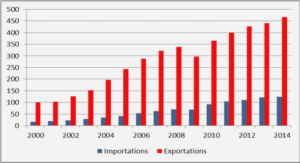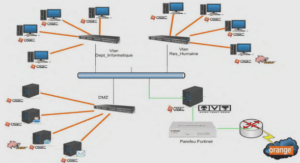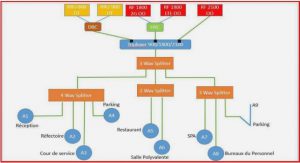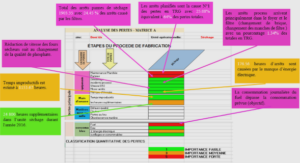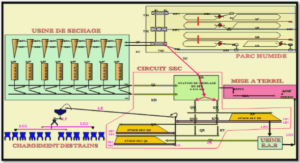Definition and Role of Standalone and Hybrid Standalone Power Generation Systems
A SPGS, also known as remote area power supply, is an off-the-grid electricity system for locations that are completely independent from any electric utility grid.
Generally, in SPGS, electricity is generated using DG. Typically, HSPGS combines at least two complementary technologies: one or more conventional ESs, such as, DG and one or more RESs, such as solar PV array, WT or MHP. The role of the SPGS or HSPGS is to ensure:
Stable and uninterruptible power supply to the local loads with high power quality and reduced cost, Minimization of GHG, Minimize the use of diesel fuel and maximize the energy provided from RESs.
Principal Elements of Hybrid Standalone Power Generation Systems
As already indicated before that HSPGS contains at least two ESs and additional elements, such as, BESS and dump loads. These elements are connected to the AC or DC bus or hybrid AC/DC bus.
Generally, the sizing of these elements is determined based on meteorological data as solar radiation and wind speed and water flow and the exact load profile of consumers over long periods(Rekioua, Matagne, 2012). Therefore, HSPGS is classified by power range, which is outlined as follow:
Low power HSPGS installation with a capacity between 10 and 250 kW, which is designed especially for isolated installation with a medium consumption such as small isolated village or mining facility.
Large power HSPGS installation with a capacity greater than 500kW, which is designed for large consumption installation such as, large isolated village.
Integrated Configurations for Hybrid Standalone Power Generation System
Generally, the AC ESs such as, WTs, DG, MHP and conventional AC loads are tied to the AC Bus,whereas the DC ESs such as, PVS, ESS and DC loads are tied to the DC Bus.
According to (Xiong, Peng et Poh Chiang, 2011), there are three possible configurations to integrate different elements into SPGS.
DC microgrid Configuration for Hybrid Standalone Power Generation Systems
In DC microgrid configuration, all elements which are AC by nature should be connected to the DC Bus through power converters. The DC loads are served directly from the DC Bus.According to (Kakigano, Miura et Ise, 2010), the DC microgrid configuration has the following advantages : High efficiency because of less conversion losses, Synchronization between ESs is not required, Loads are not affected by voltage sag, voltage swell and voltage harmonics, Power quality is not affected.
No need for frequency and phase control. According to (Kakigano, Miura et Ise, 2010), this type of configurations possess some drawbacks as: The protection in DC microgrid is more difficult because there is no zero crossing of voltage, Compared to the AC microgrid, DC microgrid is costly, No standardization for DC microgrid.
AC Microgrid Configuration for Hybrid Standalone Power Generation Systems
This configuration is the legacy of the traditional distribution system. all AC ESs are tied directly to the AC Bus. On the other side, DC/AC inverters are required for DC ESs.According to (Mariam, Basu et Conlon, 2013), this configuration has the following advantages: Utilizing existing AC grid technologies and the shelf products, Well established protections and standards.
Of course, there are some drawbacks related to the AC microgrid as indicate by (Jaehong et al., 2011): Synchronization between different available ESs and the connected AC Bus, Stability problem.
Hybrid AC/DC Microgrid Configuration for Hybrid Standalone Power Generation Systems
Several ESs, such as solar PV array, generate power in DC form. Many of the modern electrical loads, as well as ESS, are either internally DC or work equally well with DC power and connect to the AC systems through power converters. Thus, application of hybrid AC/DC microgrid configuration allows: Elimination of many AC/DC and DC/AC conversion stages, which would in turn result in considerable decrease in component costs and power losses, increase in reliability, Power quality issues, such as harmonics and unbalances, are not present in this type of configuration.
According to (Peng et al., 2011), AC/DC microgrid configuration has also some drawbacks, which are related to the energy management and control. Furthermore, operation of a hybrid AC/DC microgrid configuration is more complicated compared to AC or DC microgrid configuration.
System Control for Energy Flow Management in Hybrid Standalone Power Generation Systems
In HSPGS, energy flow management (EFM) is necessary to ensure continuous power supply to the load. According to (Chauhan et Saini, 2014), an optimal energy management strategy ensures a cost effective and reliable integrated energy system with high efficiency. Generally, the control structure in HSPGS for EFM is classified into three categories as:
Centralized Control Scheme for Hybrid Standalone Power Generation Systems: the complete HSPGS contains one master controller and several slave controllers, one for each ESs (Chauhan et Saini, 2014). With this control, sensed data of each ESs are sent to their master controller. Based on this collected data the master controller makes the decision on control action(Valenciaga et Puleston, 2005).
Acording to (Chauhan et Saini, 2014), this control structure suffers from heavy computation time and sometimes may subjected to single point failure.
Distributed Control Scheme for Hybrid Standalone Power Generation Systems: In this control scheme, each ES sends its sensed data to its local controller, and the local controllers communicate with them to take right decision (Chauhan et Saini, 2014).
According to (Lagorse, Simoes et Miraoui, 2009);(Nehrir et al., 2011), for this control arrangement, computation issue is reduced, but communication system among local controller becomes more complicate. In accordance with (Chauhan et Saini, 2014), artificial algorithms such as, artificial neural network or Multi agent system can solve the problem, which is related to the communication.
Hybrid centralized and distributed control scheme for HSPGS :centralized and distributed control schemes are combined together in this proposed control scheme (Chauhan et Saini, 2014) (HeeSang et Jatskevich, 2007). All ESs are grouped within integrated system and centralized control is applied within each groupe and distrubited control is used to cordinate each groupe.
Synchronization issues between ESs and PCC
According to the standard 1547.4-2011 (IEEE Guide for Design, Operation, and Integration of Distributed Resource Island Systems with Electric Power Systems, 2011) and (Nikkhajoei et Lasseter, 2009), all ESs must be able to: Connect safely to the local grid at the correct frequency and phase, Provide power to the connected loads with high quality, Disconnect rapidly and safely from the local grid when a fault is detected and reconnect automatically when there is no risk.
AC Voltage Regulation
Usually, in classical SPGS which uses DG with SG, the AC voltage is regulated by varying the rotor magnetic field using AVR. This method is effective if the DG is the main ES. But, if many ESs are connected to the PCC, reactive power consumption varies continually, implying reactive losses in the system. This full magnitude of the reactive losses cannot be compensated by DG. Therefore, additional equipment is required to regulate the AC voltage at the PCC. Otherwise, this variation will cause serious damage in equipment.
System Frequency Regulation
Mostly, the system frequency in SPGS, which uses DG is determined by the rotational speed of the generator shaft, and is regulated by keeping the speed of DE constant using its speed governor. However, for MHP driven fixed speed SCIG, ELC is required to regulate the AC voltage and the system frequency. Otherwise, any decrease in local consumer load may accelerate the generator and raise the voltage and frequency, implying large stress at the PCC (Singh, Murthy et Gupta, 2005). Therefore, stable operation of SPGS is dependent on balance between load demand and generation. The difference should be kept equal zero in order to maintain the system frequency constant (f=60Hz or 50Hz).
Power Quality Requirement
Usually, the power quality is the major problem in both ‘on’ and ‘off-grid’, hence the existing standards in this field are to be applied for both. According to (IEEE Recommended Practices and Requirements for Harmonic Control in Electrical Power Systems, 1993), the injected current in grid should have a total harmonics less than 5%. Otherwise, power quality deterioration many results in increased losses, poor utilization of distribution systems, maloperation of sensitive equipment and disturbances to nearby consumers, protective devices, and communication systems (Singh, Chandra et Al-Haddad, 2015). Plugging and unplugging RESs and the DG from the SPGS have tendency to create voltage unbalance. Moreover, continual variation of the loads can also create voltage sag and swell problems (Singh et Chandra, 2011).
|
Table des matières
INTRODUCTION
CHAPITRE 1 LITERATURE REVIEW
1.1 Introduction
1.2 Definition and Role of Standalone and Hybrid Standalone Power Generation Systems
1.3 Principal Elements of Hybrid Standalone Power Generation Systems
1.3.1 Renewable Energy Sources
1.3.1.1 Wind Turbine Conversion System
1.3.1.2 Hydro Power System
1.3.1.3 Solar Photovoltaic (PV) System
1.3.1.4 Diesel Generator
1.3.2 Dump loads
1.3.3 Battery Energy Storage System
1.3.4 Power Electronics Device
1.4 Integrated Configurations for Hybrid Standalone Power Generation System
1.4.1 DC microgrid Configuration for Hybrid Standalone Power Generation Systems
1.4.2 AC Microgrid Configuration for Hybrid Standalone Power Generation Systems
1.4.3 Hybrid AC/DC Microgrid Configuration for Hybrid Standalone Power Generation Systems
1.5 System Control for Energy Flow Management in Hybrid Standalone Power Generation Systems
1.5.1 Centralized Control Scheme for Hybrid Standalone Power Generation Systems
1.5.2 Distributed Control Scheme for Hybrid Standalone Power Generation Systems
1.5.3 Hybrid centralized and distributed control scheme for HSPGS
1.6 Problematic
1.6.1 Problems Related to the Intermittence of the Renewable Energy Sources
1.6.2 Maximization of the Generated Power from Renewable energy sources
1.6.3 Fuel Consumption Minimisation for DG
1.6.4 Underutilization of Power Electronics Devices Rating
1.6.5 Synchronization issues between ESs and PCC
1.6.5.1 AC Voltage Regulation
1.6.5.2 System Frequency Regulation
1.6.5.3 Power Quality Requirement
1.7 Objectives
1.8 Methodology
CHAPITRE 2 MODELING OF THE ELEMENTS OF STANDALONE POWER GENERATION SYSTEMS
2.1 Introduction
2.2 Modeling of the Wind Turbine
2.2.1 Aerodynamic conversion
2.2.2 Rotor Optimal Tip Speed Ratio
2.2.3 Transmission
2.3 Modeling of the solar PV array
2.3.1 Mathematical model of PV cell
2.4 Micro-Hydro power
2.4.1 Micro-Hydro power and governor model
2.5 Diesel Generator
2.5.1 Diesel Prime Mover and Governor
2.6 Classification and modeling of the electrical machines
2.6.1 Mathematic model of the induction machines
2.6.1.1 Mathematical model of the Doubly-Fed induction generator
2.6.1.2 Mathematical model of the squirrel cage induction generator
2.6.2 Mathematic model of synchronous machine
2.6.3 Mathematical model of permanent magnetic synchronous generator
2.6.4 Mathematical model of Permanent Magnetic Brushless Direct Current Generator
2.6.5 Mathematical model of Synchronous Reluctance Generator
2.7 Power Electronics Interface
2.7.1 Modeling of the DC/AC inverter
2.7.2 Modeling of the DC/DC boost converter
2.7.3 Modeling of the DC/DC buck boost converter
2.8 Conclusion
CHAPITRE 3 STANDALONE POWER GENERATING SYSTEM EMPLOYING SOLARPHOTOVOLTAIC POWER
3.1 Introduction
3.2 System Description
3.3 Modeling and Control Strategy
3.3.1 Modeling of Solar PV Array
3.3.2 Mathematical Model of the DC/DC Boost Converter
3.3.3 Maximum Power Tracking Based on Sliding Mode Approach
3.3.3.1 Choice of Sliding Surface
3.3.3.2 Determination of the Equivalent Control
3.3.3.3 System Stability Analysis
3.3.4 Overvoltage Protection of the BESS
3.3.5 Mathematical Model of the CC-VSC
3.3.6 AC Voltage Regulation Based on Sliding Mode Approach
3.3.6.1 Choice of Sliding Surface
3.3.6.2 Determination of the Equivalent Control
3.3.6.3 Stability Analysis
3.3.7 Selecting the rating of BESS
3.4 Simulation Results and Discussion
3.5 Experimental Results and Discussion
3.6 Conclusion
CHAPITRE 4 HYBRID STANDALONE POWER GENERATION SYSTEMS EMPLOYING SOLAR PV ARRAY AND DIESEL GENERATOR
4.1 Introduction
4.2 Topology Designs for HSPGS based on Solar PV Array and DE Driven Fixed Speed Generators
4.2.1.1 System Description and Control
4.3 Topology Designs of Hybrid Standalone Power Generation System based on PV Array and DE Driven Variable Speed Generators
4.3.1 System Description and Control
4.3.1.1 Model of the variable speed DG
4.3.1.2 Control of the Rotor Side Converter
4.3.1.3 Control of the interfacing DC/AC inverter
4.4 Simulation Results and Discussion
4.4.1 Performance of the HSPGS power generation using PV and DG driven fixed speed SG
4.4.2 Performance of the HSPGS power generation using PV and DG driven variable speed DFIG
4.5 Conclusion
CHAPITRE 5 HYBRID STANDALONE POWER GENERATION SYSTEM EMPLOYING SOLAR PV ARRAY AND MHP
5.1 Introduction
5.2 Topology designs of hybrid standalone power generation system based on PV array and MHP driven fixed speed generators
5.2.1.1 Description and control of hybrid standalone power generation system based on PV and MHP driven fixed speed SyRG
5.2.1.2 Description and control of hybrid standalone power generation system based on PV and MHP driven fixed speed SCIG
5.3 Simulation results and discussion
5.3.1 Performance of the hybrid standalone power generation system based on solar PV and MHP driven fixed speed SyRG
5.3.1.1 Performance analysis under load and solar irradiation change
5.3.1.2 Performance analysis under balanced and unbalanced nonlinear loads
5.3.1.3 Performance analysis when the BESS becomes fully charged (SOC%=100%)
5.3.2 Performance of the hybrid standalone power generation system based on solar PV and MHP driven fixed speed SCIG
5.3.2.1 Performance analysis under load and solar irradiation change
5.3.2.2 Performance analysis under unbalanced linear load
5.3.2.3 Performance analysis under unbalanced nonlinear load
5.3.2.4 Performance analysis under completely removed load
5.4 Conclusion
CHAPITRE 6 HYBRID STANDALONE POWER GENERATION SYSTEM EMPLOYING SOLAR PV ARRAY AND WT
6.1 Introduction
6.2 Topology designs of hybrid standalone power generation system based on PV array and WT driven fixed speed generators
6.2.1.1 Description and control of hybrid standalone power generation system based on solar PV array and WT driven fixed speed SCIG
6.2.1.2 Control algorithms for solar PV array and WT driven fixed speed SCIG
6.3 Topology designs of hybrid standalone power generation system based on solar PV array and WT driven variable speed generators
6.3.1.1 Control algorithms for solar PV array and WT driven variable speed SyRG
6.3.1.2 Description and control of hybrid standalone power generation system based on solar PV array and WT driven variable speed PMBLDCG
6.3.2 Control design of the DC/DC Boost Converter for PV side
6.3.2.1 MPPT Algorithm Based on Sliding Mode Approach for solar PV array
Controller gain design
6.3.3 Control Design for DC-DC Boost Converter for WT side
6.3.3.1 Maximum Power Tracking Based on Sliding Mode Approach for WT
6.3.4 Control of CC-VSC
6.4 Simulation results and discussion
6.4.1 Performance of HSPGS based on solar PV array and WT driven fixed speed SCIG
6.4.2 Performance of HSPGS system based on solar PV array and WT driven variable speed SyRG
6.4.3 Performance of HSPGS based on solar PV array and WT driven variable speed PMBLDCG
6.4.3.1 Simulation results
6.4.3.2 Experimental results
6.5 Conclusion
CHAPITRE 7 HYBRID STANDALONE POWER GENERATION SYSTEM EMPLOYING WT AND DG
7.1 Introduction
7.2 Topology designs of HSPGS based on DG and WT driven fixed speed generators
7.2.1.1 Description and control of hybrid standalone power
generation system based on WT and DG driven fixed speed SG and PMSG
7.3 Topology designs of hybrid standalone power generation system employing DG and WT driven variable speed generators
7.3.1 Description and control of HSPGS employing WT and DG driven variable speed PMBLDCG and PMSG
7.4 Simulation results and discussion
7.4.1 Performance of the HSPGS based on DG and WT driven fixed speed SG and PMSG
7.4.2 Performance of the hybrid standalone power generation system based on DG and WT driven variable speed PMSG and PMBLDCG
7.5 Conclusion
CONCLUSION
![]() Télécharger le rapport complet
Télécharger le rapport complet

